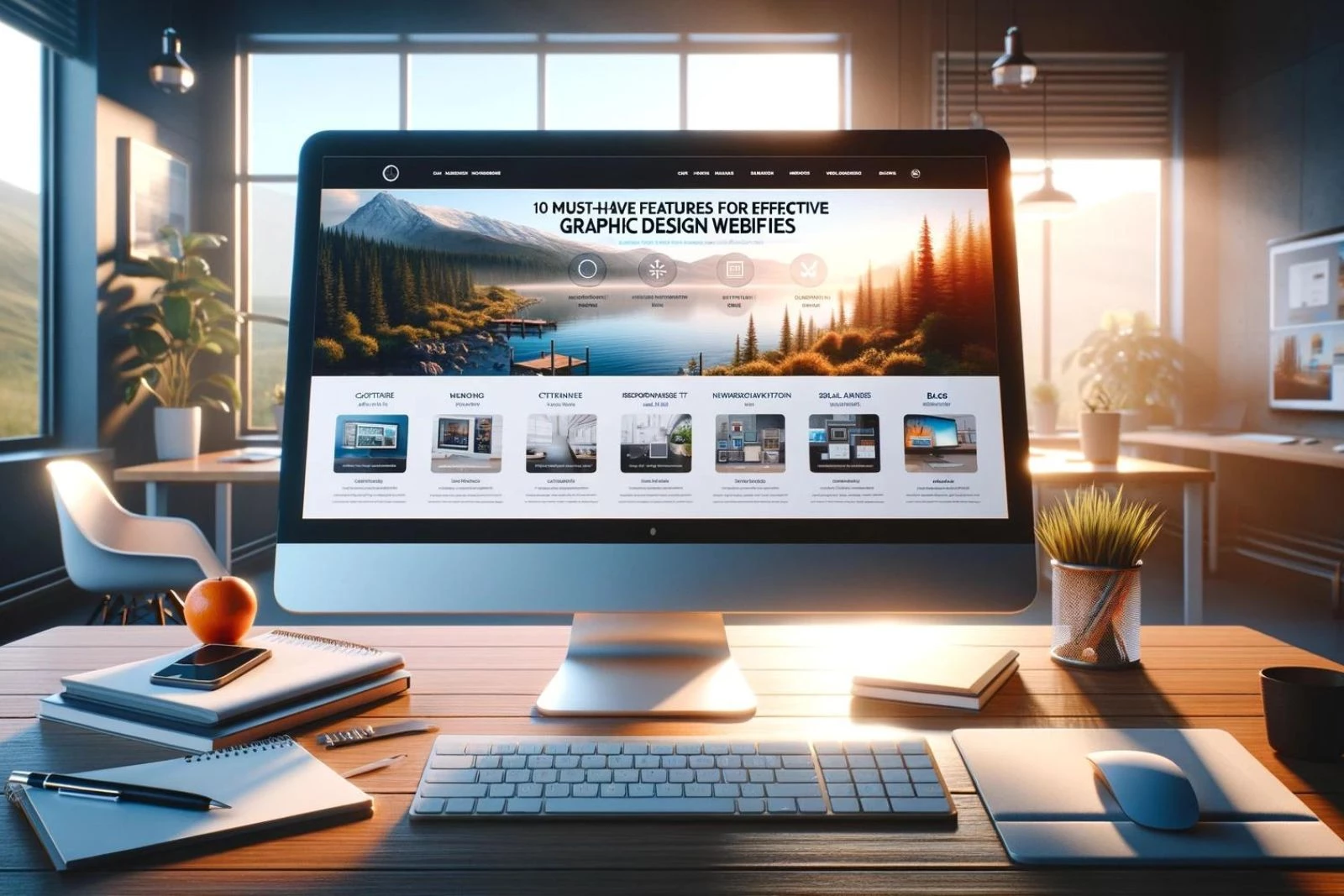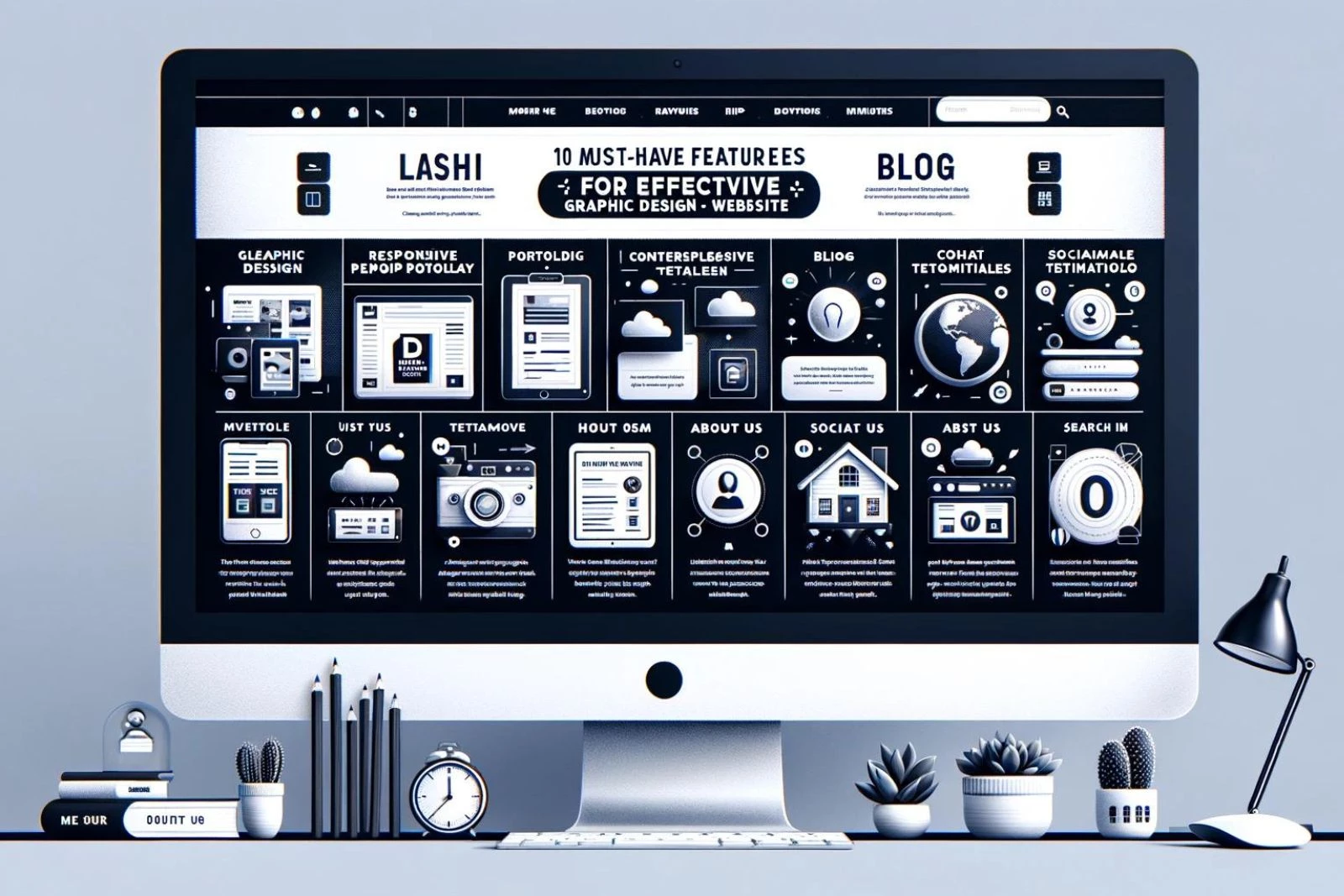
Discover the essential features every graphic design websites needs for success! From portfolio showcases to responsive design, optimize your site today.
In the visually driven world of digital marketing, graphic design websites stand as the epitome of creativity and innovation. These websites not only showcase a designer's portfolio but also serve as a critical touchpoint for attracting potential clients and establishing a brand's identity online. As such, it's paramount that graphic design websites are crafted with meticulous attention to detail and equipped with features that enhance user experience, improve engagement, and drive conversions. Here, we delve into the 10 essential features that every graphic design website should incorporate.
The core of any graphic design website is its aesthetic appeal. A clean, minimalistic design not only reflects the designer’s ability to create visually appealing content but also ensures that the website is easy to navigate. This approach helps in highlighting the portfolio and services without overwhelming visitors with excessive information or clutter.
A portfolio is the heart of graphic design websites. It should showcase a wide range of projects, demonstrating versatility and skill across various mediums and design styles. High-resolution images and brief descriptions of each project, including the concept, process, and outcome, can provide insights into the designer's approach and creativity.
With the increasing use of mobile devices to access the web, having a responsive website design is non-negotiable. Graphic design websites must ensure an optimal viewing experience across all devices—desktops, tablets, and smartphones—by adapting the layout and content seamlessly.

Intuitive and straightforward navigation is crucial for keeping visitors engaged. A well-organized menu, clear categorization of projects, and a simple path to contact information or inquiry forms can significantly enhance the user experience, making it easier for potential clients to explore your work and reach out.
Speed is of the essence in the digital realm. Websites with slow loading times risk high bounce rates as users are likely to lose patience and move on. Optimizing images, leveraging browser caching, and minimizing the use of heavy scripts can improve load times, ensuring visitors have a smooth experience.
For graphic design websites to reach their target audience, they must rank well on search engines. Incorporating SEO best practices, such as keyword-rich titles and descriptions, alt tags for images, and high-quality inbound links, can enhance visibility and attract more organic traffic.
Client testimonials and detailed case studies add credibility and trust to graphic design websites. Sharing success stories and feedback from satisfied clients can persuade potential customers of your expertise and the value you can bring to their projects.
A blog can be a powerful tool for graphic design websites, offering a platform to share insights, trends, tutorials, and personal projects. Regularly updated content not only helps in establishing authority in the field but also contributes to SEO efforts by generating fresh content and keywords.
Making it easy for potential clients to get in touch is fundamental. Graphic design websites should include visible contact information and simple inquiry forms. Options for direct email, phone calls, and social media links, along with a quick contact form, ensure that visitors can reach out with ease.
Social media platforms are invaluable for promoting work, engaging with the audience, and driving traffic to the website. Integrating social media feeds or links to profiles on graphic design websites can help in building a community around your brand and keeping followers updated on new projects or blog posts.
Among these features, enhancing the user experience stands out as a critical factor in the success of graphic design websites. A website that is visually appealing, easy to navigate, and quick to load can significantly impact a visitor's perception of your brand and their decision to engage with your services.

Diving deeper into the importance of responsive design, it's clear that this feature is not just a recommendation but a necessity. In an era where mobile browsing surpasses desktop, a graphic design website must perform flawlessly on every screen size. Responsive design ensures that your website’s layout, images, and content adjust smoothly to any device, offering an optimal user experience and preventing potential clients from bouncing off due to poor usability.
In conclusion, building an effective graphic design website requires more than just showcasing your best work. It demands a strategic approach to design and functionality, incorporating features that enhance user experience, improve SEO, and facilitate easy communication. By integrating these 10 must-have features, graphic design websites can stand out in a crowded digital space, attract more visitors, and convert them into potential clients. Remember, in the competitive world of graphic design, your website is not just a portfolio but a reflection of your creativity, professionalism, and attention to detail.
Craft a standout portfolio by selecting your best work, organizing it into categories, and presenting it with high-resolution images and clear descriptions.
Design compelling CTAs by using contrasting colors, concise copy, and strategically placing them throughout your website to guide visitors towards desired actions.
Ensure responsiveness by using a mobile-friendly theme or framework, testing your website across various devices, and optimizing elements for different screen sizes.
Feature testimonials prominently on your website by gathering feedback from satisfied clients, selecting compelling quotes, and displaying them with accompanying client names and photos.
Integrate social media links by adding social icons to your website's header, footer, or sidebar, and linking them to your active social media profiles.



